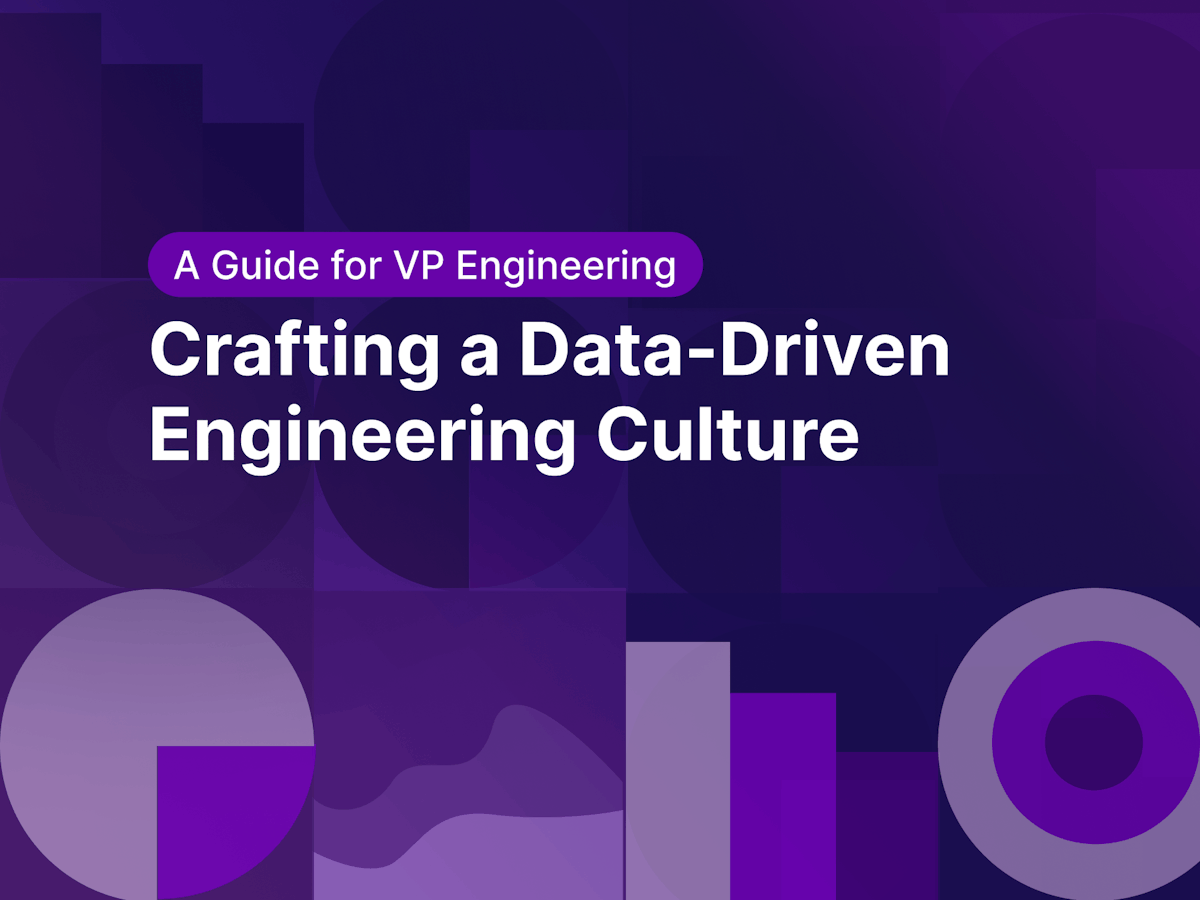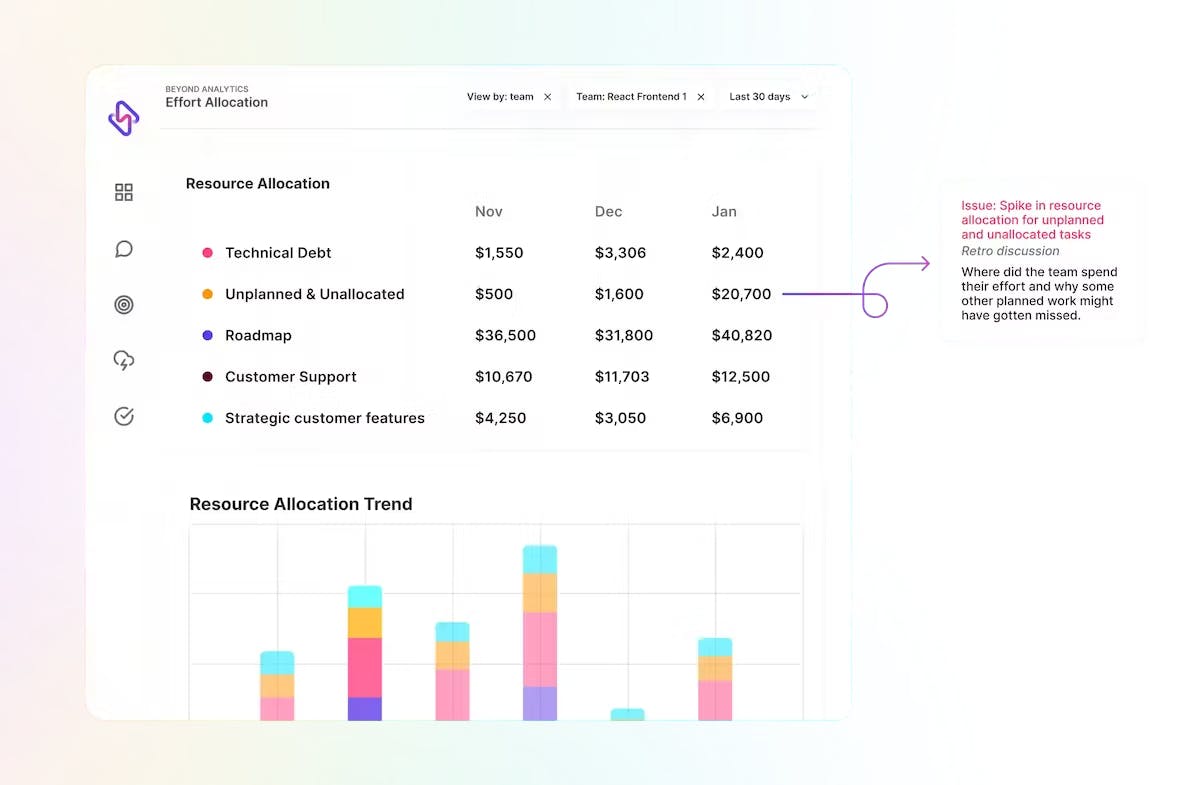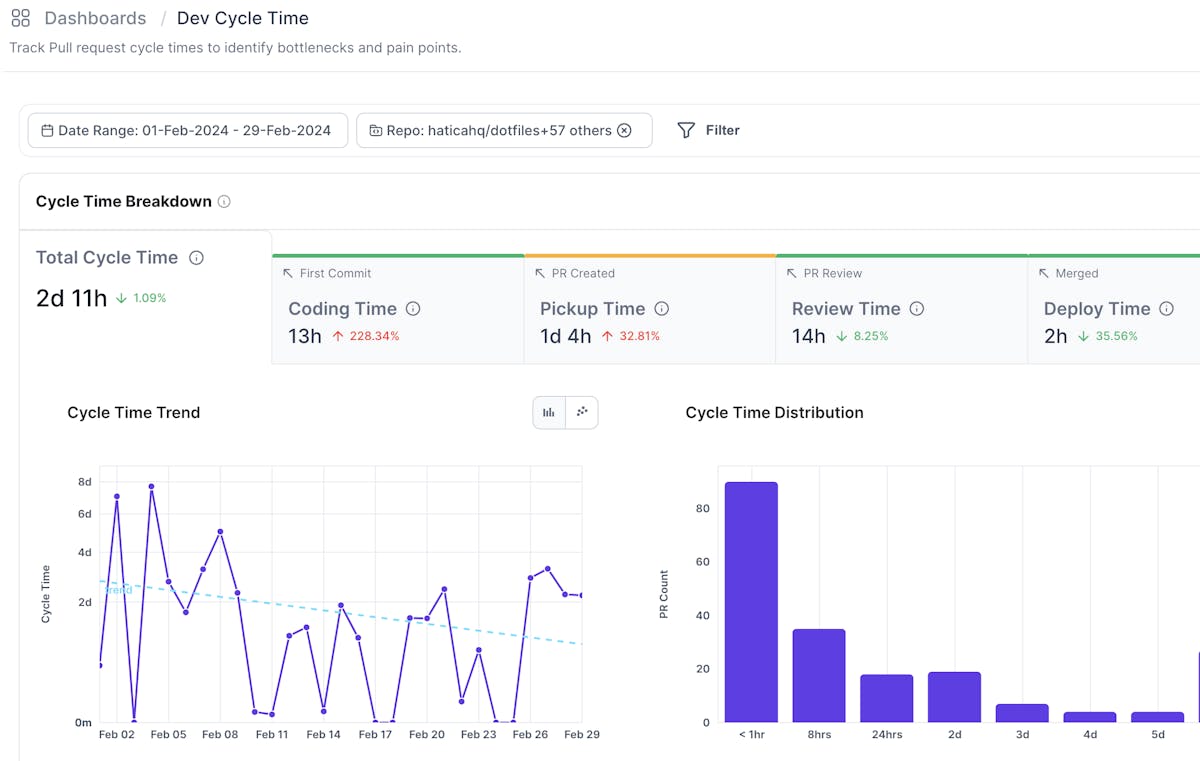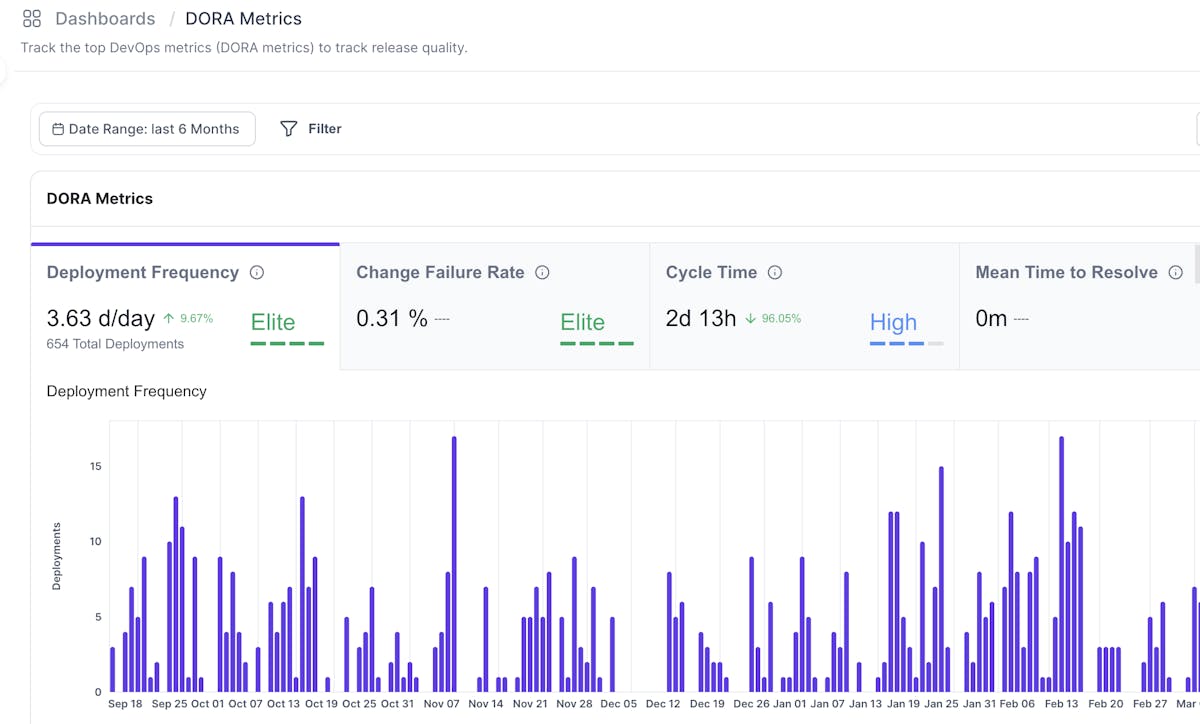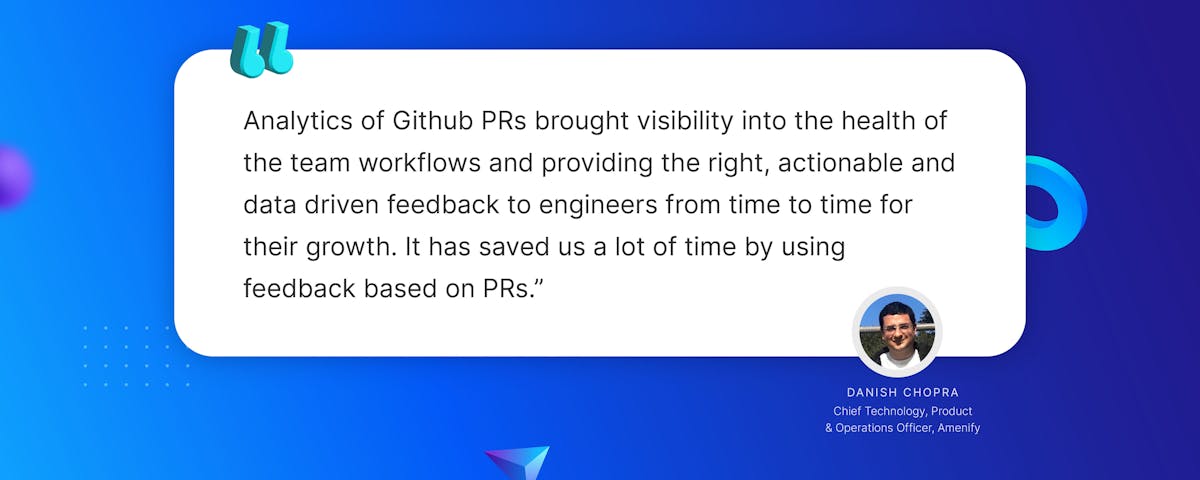Regardless of your leadership role, data is a valuable tool for assessing your team's health, allowing you to identify and address issues, and empowering engineers to excel in solving complex problems.
For a VP of Engineering, measuring how effectively your engineering team is delivering can be tricky in a world filled with constant changes like PaaS, GenAI, and containerization. While it's common to take on customer-focused projects, it's not always clear how they impact the business's bottom line.
When talking to VPs of Engineering about their efforts to improve profits, we often see detailed project plans. However, there goes full silence every time the questions turn to: how these engineering projects are progressing, or what is the ongoing ROI of their engineering investment.
Simply moving projects forward doesn't guarantee increased revenue, higher profits, or a stronger market position. Today's engineering teams face scrutiny for key metrics like engineering effectiveness, delivery velocity, and innovation pace. Balancing these factors while optimizing developer experience is the responsibility of the VP of Engineering.
In software project transformation, VPs of Engineering should focus on making a real impact.
This means that they must champion a shift to impact-driven leadership, prioritizing scalable projects, building faster MVPs, and measuring the value created.
Most importantly, they need to foster a data-driven engineering culture.
Today, let's talk about crafting a data-driven engineering culture, figuring out how a VP of Engineering can measure success, looking at engineering metrics, and making sure these metrics are heading in the right direction. But first, let's understand the problems leaders face without data.
The Importance of a Data-Driven Approach for a VP of Engineering
A robust data-driven approach acts as a reliable compass for a VP of Engineering’s leadership journey. Think of your leadership journey as a voyage. Using a data-driven approach is like having a helpful compass that not only points the way but also shows what's coming up ahead. It's a bit like having an experienced guide when sailing through tricky waters full of uncertainties, opportunities, and obstacles. By providing useful information consistently, the compass simplifies decision-making.
This special compass doesn't just show the final destination; it also helps the VPE understand their team better. It highlights where the team works well together, spots areas for improvement, and reveals how productive the team is. Think of it as a guiding light that brightens up the specifics of the team's strengths and areas for improvement.
Operating without a data-driven foundation comes with its fair share of risks. Firstly, there's the challenge of invisible delivery from your engineering team. The progress of software development might stay hidden until a new product or feature is released, leading to questions about the team's workload, timelines, and output in leadership meetings. This lack of visibility makes it trickier to coordinate with other business departments.
Then, there's the issue of risky decision-making. Informed decisions within the organization are crucial for safeguarding market share. Without data guidance, decisions can become uninformed, potentially resulting in costly mistakes, misallocation of resources, and a deviation from actual needs.
Lastly, there's the risk of lacking confidence in the boardroom. Expressing performance results and staffing needs without empirical data may face resistance when securing resources.
Now that we've emphasized the importance of a concrete data-driven strategy, let's explore the metrics a VP of Engineering should consider to stay on track.
What are the Metrics That Drive Success For a VP of Engineering?
The VPE is the face of engineering in an organization and orchestrator of business transformation through software projects. They aim to position themselves and their teams as pioneers in the ecosystem, shaping the future of engineering.
A VP of engineering stands at the crossroads of technical expertise, business strategy, and people leadership. Hence, it becomes important to keep an eye on the right metrics to succeed in these three areas.
Therefore, here we've gathered the top software metrics and KPIs that VPEs could track to make informed decisions, acknowledge engineering work, and define success for their teams:
1. Financial Metrics
Financial prudence is the new battleground of the VP of engineering. With the rise in uneven engineering demands, the cost of developing and scaling software too is spiking exponentially, making it imperative for VPEs to track how much resources are spent on each engineering project, and whether they improve the breadth of the bottom line.
The ideal financial metric that VPEs must take into account is business value created, i.e. Return on Investment (ROI) - the impact of engineering efforts on revenue growth, and bottom line. A high ROI means more resources are now available to serve real users, thus improving platform speed and reliability.
Hatica’s engineering management platform helps VPEs track, and even improve the ROI on engineering projects by understanding how much resources are being spent on the project, flagging underutilized resources so they can be allocated to the roadmap, and capitalizing R&D investments so they don’t become a drag on bottom line.
2. Customer Satisfaction
Have you ever heard a VP of Engineering boasting about the impeccable efforts his Director of Engineering and team puts into delivering high-quality products and projects?
The chances are that he has received a good word from a customer lately. That’s the importance of a happy and satisfied customer.
Customer satisfaction as a metric helps engineering, and business teams to align to projects delivering maximum value to customers in real-time. Moreover, it helps VPEs to justify the engineering investments to CTOs, and later to the board members who are looking to bring down costs on all fronts.
Satisfied customers lead to repeat business, referrals, and ultimately, revenue growth. Understanding their pain points helps prioritize engineering efforts towards features and improvements that directly impact their happiness.
The true success of an engineering team lies in how fast they can respond to customer needs and create the best possible experience. Quantifying CX is one hell of a challenge for a VPE, but here are a few metrics to track so you have a complete picture of the relationship customers have with the product developed:
- Net Promoter Score (NPS) surveys to understand, and improve customer loyalty and willingness to recommend your product.
- Customer Satisfaction Score (CSAT) gauges satisfaction with specific interactions or experiences.
- Effort score measures how easy it was for customers to interact with your product or support.
- Customer churn to quantify the number of customers who cancel their subscriptions or services.
These metrics together are good indicators of ease of onboarding, product adoption, and stickiness of the customer with the product over a period of time.
And this has been possible because of an engineering team whose efforts are well aligned with business goals, handling tech debt, and balancing it off with new initiatives and R&D.
3. R&D Investment and Effort Distribution
As a VP of engineering, understanding where your R&D resources are going is crucial to drive transparency and bring strategic, and long-term alignment between engineering efforts and business priorities.
As an engineering leader, this is only going to help you streamline efforts and maximize ROI for those efforts.
This metric is crucial for any growing engineering team, be it mature startups, or large-sized legacy organizations. But why?
R&D is often the largest chunk of investment in an engineering budget, and C-suite executives need to see a strong return on investment for those dollars spent, and how it makes balance sheets healthier, and bottom lines stronger. The signal helps you understand the investment-effort breakdown of engineering activities:
Feature vs. infrastructure: Are we building customer-centric products or just laying the foundation for one, is the resource utilization aligned with business expectations.


